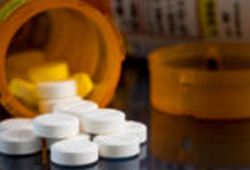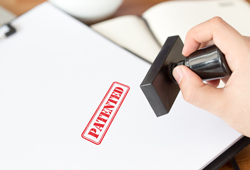USPTO Deferred-Fee Provisional Application Pilot Program for COVID-19 Related Inventions

In an effort to lend further support to the expedited development of COVID-19-related vaccines and therapeutics (see Covid-19 Prioritized Examination Pilot Program), the United States Patent and Trademark Office (USPTO) has implemented a deferred-fee provisional patent application pilot program whereby applicants filing under 35 U.S.C. 111(b) can elect to defer the $300.00 USD provisional filing fee ($150 for small entities; $75 for micro-entities) until the filing of a corresponding non-provisional application.
In order to be eligible for the deferred-fee pilot program:
- the subject matter disclosed in the provisional application must be directed to a product or process related to COVID-19;
- the product or process must have obtained, be pending, or will seek prior to marketing, Food and Drug Administration (FDA) approval for COVID-19 use;
- the applicant must submit a technical disclosure, a provisional application coversheet, and a completed PTO/SB/452 form (“Certification and Request for COVID-19 Provisional patent Application Program”); and
- the applicant must agree that the technical subject matter disclosed in the provisional application will be published on the USPTO website.
While insulated from being cited against an inventor’s own later-filed corresponding non-provisional application in the United States, the USPTO warns that special consideration should be taken by applicants seeking international patent protection since “[m]any foreign jurisdictions treat an inventor’s public disclosure made within one year of filing as prior art against the inventor’s own application unless that earlier disclosure is the subject of a proper priority claim in that jurisdiction.”
The USPTO will accept certifications and requests to participate in the deferred-fee program until September 17, 2021, after which the program may be extended beyond that date and may be expanded to other technological areas beyond COVID-19 requiring rapid innovation.
 When submitting a new drug application (“NDA”) with the FDA, an applicant (or branded company) is required to file a list of patents that cover the drug product. These patents will be listed in the FDA’s Orange Book upon approval of the drug for commercial sale. Patents that are eligible to be listed in the Orange Book are patents that have claims that cover the drug substance (active ingredient), the drug product (formulation and composition), or the approved method of use.
When submitting a new drug application (“NDA”) with the FDA, an applicant (or branded company) is required to file a list of patents that cover the drug product. These patents will be listed in the FDA’s Orange Book upon approval of the drug for commercial sale. Patents that are eligible to be listed in the Orange Book are patents that have claims that cover the drug substance (active ingredient), the drug product (formulation and composition), or the approved method of use.

 The United States Patent and Trademark Office (USPTO) is accepting requests for prioritized examination or “fast track” of patent applications that claim a product or process subject to FDA approval for COVID-19 use, without the payment of additional fees. The USPTO will advance accepted patent applications out of turn, aiming to reach a final disposition within one year of granting prioritized status. Up to 500 patent applications will be accepted under the pilot program. As of July 9, 2020, 66 requests had been granted, with 434 acceptances still available.
The United States Patent and Trademark Office (USPTO) is accepting requests for prioritized examination or “fast track” of patent applications that claim a product or process subject to FDA approval for COVID-19 use, without the payment of additional fees. The USPTO will advance accepted patent applications out of turn, aiming to reach a final disposition within one year of granting prioritized status. Up to 500 patent applications will be accepted under the pilot program. As of July 9, 2020, 66 requests had been granted, with 434 acceptances still available. Life science companies developing new therapeutics – both small molecule and biologic – know that obtaining long patent term for their products is a key driver of valuation and revenue. A particular challenge in this respect is minimizing the loss of patent term during drug development. Fierce competition in the marketplace often requires that innovators patent their drug products as early as possible in the development process, but because the clock on a United States (patent’s lifespan starts running the moment it is filed, years of valuable patent term are often lost as a product navigates the regulatory approval process. An important method to mitigate these losses can be found in the Patent Term Extension (“PTE”) provisions of 35 U.S.C § 156, which provide statutory compensation for the substantial time and resources expended by an innovator to bring a new drug to market. In a nutshell, PTE restores a portion of the patent term, up to five years, that is lost during the period a new drug or medicinal product is awaiting pre-market regulatory approval in the U.S.. When a new chemical entity (“NCE”) – either a small molecule or a biologic – is approved by FDA as a therapeutic, a patent claiming either the NCE or its method of use may be entitled to PTE.
Life science companies developing new therapeutics – both small molecule and biologic – know that obtaining long patent term for their products is a key driver of valuation and revenue. A particular challenge in this respect is minimizing the loss of patent term during drug development. Fierce competition in the marketplace often requires that innovators patent their drug products as early as possible in the development process, but because the clock on a United States (patent’s lifespan starts running the moment it is filed, years of valuable patent term are often lost as a product navigates the regulatory approval process. An important method to mitigate these losses can be found in the Patent Term Extension (“PTE”) provisions of 35 U.S.C § 156, which provide statutory compensation for the substantial time and resources expended by an innovator to bring a new drug to market. In a nutshell, PTE restores a portion of the patent term, up to five years, that is lost during the period a new drug or medicinal product is awaiting pre-market regulatory approval in the U.S.. When a new chemical entity (“NCE”) – either a small molecule or a biologic – is approved by FDA as a therapeutic, a patent claiming either the NCE or its method of use may be entitled to PTE. To determine when your (or your competitor’s) patent expires, first identify the correct filing date of the patent application. A U.S. utility patent (filed on or after June 8, 1995) expires 20 years from the earliest filing date of the patent. If the patent claims priority to an earlier patent application, then the 20 year term starts from the filing date of the earlier patent application. (Note, some earlier patent applications are excluded from this consideration and do not impact the patent term). You can determine if your patent claims priority to an earlier patent application by looking at the first page of the patent for a subsection titled “Related U.S. Application Data.” Sometimes this information is also found in the first paragraph of the specification of the patent. If your patent claims priority to one or more earlier-filed patent applications, those patent applications will be listed by their application number and filing date in this subsection. Application numbers can be in the format of an international patent application (having the application serial number format of PCT/XXYEAR/######) or in the format of a U.S. patent application (having the application number format of 01/###,### through 16/###,###). Identify the earliest filing date from these patent applications, and the patent term expires 20 years from this date.
To determine when your (or your competitor’s) patent expires, first identify the correct filing date of the patent application. A U.S. utility patent (filed on or after June 8, 1995) expires 20 years from the earliest filing date of the patent. If the patent claims priority to an earlier patent application, then the 20 year term starts from the filing date of the earlier patent application. (Note, some earlier patent applications are excluded from this consideration and do not impact the patent term). You can determine if your patent claims priority to an earlier patent application by looking at the first page of the patent for a subsection titled “Related U.S. Application Data.” Sometimes this information is also found in the first paragraph of the specification of the patent. If your patent claims priority to one or more earlier-filed patent applications, those patent applications will be listed by their application number and filing date in this subsection. Application numbers can be in the format of an international patent application (having the application serial number format of PCT/XXYEAR/######) or in the format of a U.S. patent application (having the application number format of 01/###,### through 16/###,###). Identify the earliest filing date from these patent applications, and the patent term expires 20 years from this date.